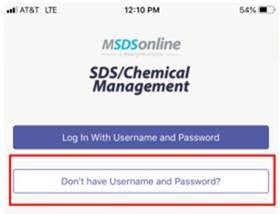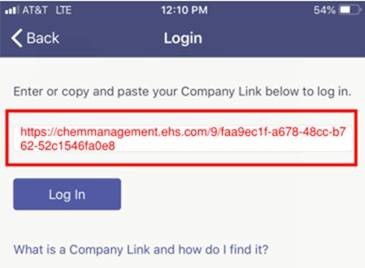Safety Data Sheets exist to provide you with information on the hazards associated with chemicals you use. Are you aware of the risks? Any time you use a hazardous product on site, you should first know the risks and how to protect yourself and others.
Be sure to follow the instructions below to download and use the MSDSonline app.
Five Important Things
Although the SDS has 16 sections that provide valuable information, there are FIVE sections you should pay special attention too:
- FIRST AID (SECTION 4) – Basic first aid information is available on the product label, but the SDS provides more detail on symptoms of exposure and initial treatment
- FIRE-FIGHTING (SECTION 5) – Specific firefighting techniques, including fire extinguisher choice, as well as what hazards exist if the chemical catches fire
- SPILLS (SECTION 6) – Special handling procedures and PPE needed as well as containment and cleanup methods
- STORAGE AND HANDLING (SECTION 7) – Segregation of incompatible materials as well as safe storage and handling procedures
- ROUTES OF EXPOSURE (SECTION 8 AND 11) – In-depth info on how the chemical can affect you, including exposure limits and the effects of acute and chronic exposure
16 Sections of the SDS
There are 16 sections of the new Safety Data Sheet:
- Identification – Name & address of the manufacturer, product identifier, and recommended use
- Hazard(s) Identification – Hazards of the chemical and appropriate warning information
- Composition/Information on Ingredients – Ingredients, impurities, stabilizing additives, mixtures, etc.
- First-Aid Measures – Initial care given by untrained responders
- Fire-Fighting Measures – Which extinguisher to use, special equipment necessary, etc.
- Accidental Release Measures – Appropriate responses to spills, leaks, or releases
- Handling and Storage – Safe handling and storage practices
- Exposure Controls / Personal Protection – Exposure limits and PPE required
- Physical and Chemical Properties – Physical and chemical properties associated with the chemical
- Stability and Reactivity – How stable or reactive is the chemical
- Toxicological Information – Routes of exposure and health effects
- Ecological Information (non-mandatory) – Impact on the environment
- Disposal Considerations (non-mandatory) – Proper disposal, recycling or reclamation and safe handling practices
- Transport Information (non-mandatory) – Classification information for shipping and transporting by road, air, rail, or sea
- Regulatory Information (non-mandatory) – Safety, health, and environmental regulations specific to the product
- Other Information – When the SDS was prepared or revised
MSDSonline App
At Magleby, we use a mobile, online MSDS app to help protect our employees. The app is free to install and use. Please be sure to download it to your phone and familiarize yourself with it BEFORE you need it. Look up the chemicals you use daily and know the risks!
Follow these steps to download and use the MSDSonline app:
- Download the SDS / Chemical Management app:
- Choose “Don’t have Username and Password?“

- Copy and paste the following Company Link and click “Log In”
https://chemmanagement.ehs.com/9/faa9ec1f-a678-48cc-b762-52c1546fa0e8

- Now that you are logged in, familiarize yourself with the app.
You can also download the MSDS-Online-Setup MSOP for a printable version of these steps.
You can also reference the FREE SAFETY DATA SHEET INDEX online.










